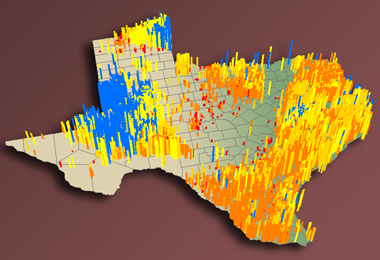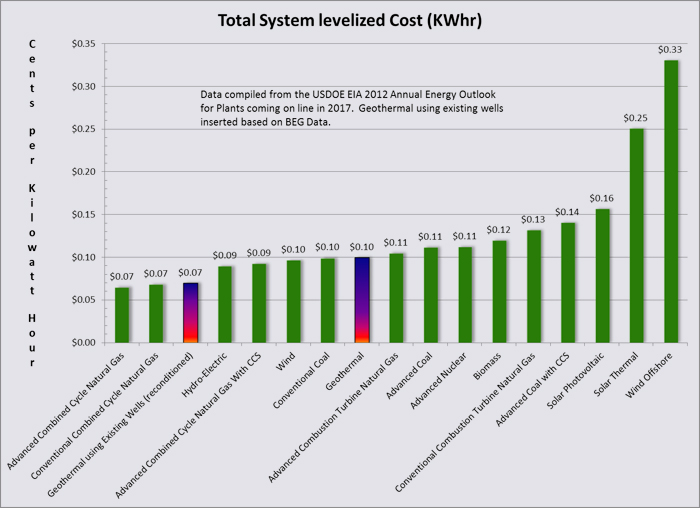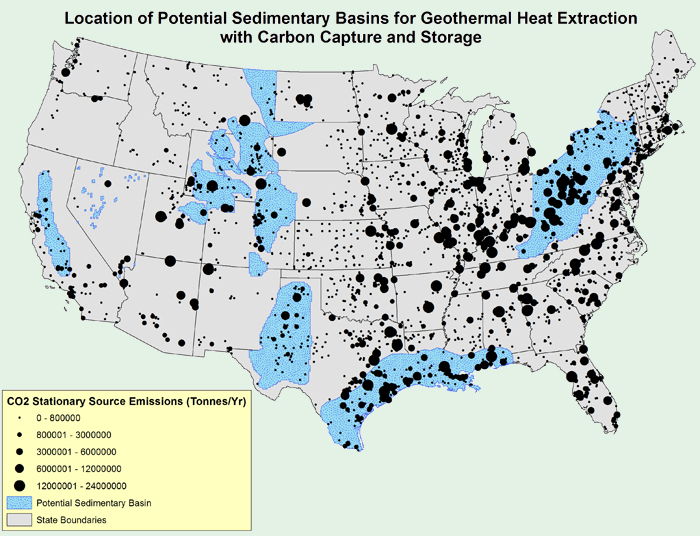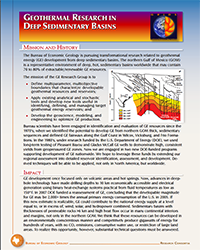GRIDS: Current Research

The primary focus of the Texas Geothermal Resource Division is low-temperature deep sedimentary geothermal reservoirs, which are common in Texas. Our current research deals with the Gulf Coast, Anadarko, East Texas, Delaware, Val Verde, and Maverick Basins. Our primary goal is to influence private industry to invest in geothermal energy.
According to the Rail Road Commission of Texas, more than 1 million wells have been drilled in Texas. These wells can effectively be thought of as “existing infrastructure” for geothermal development. Every year, thousands of these wells are plugged. One of the primary aims of the Texas Geothermal Resource Division is to show how geothermal power production using these existing wells is economically feasible.
Our preliminary efforts were to compile a state-wide database of existing wells with corrected BHT measurements. Since then, we’ve been able to analyze Texas’ geothermal resources. Some of our latest research is centered on thermal and cost modeling of geothermal sites in Texas.Some of our preliminary results indicate excellent margins with co-production of geothermal energy and hydrocarbons. With an existing O&G operation and in-place infrastructure:

This research is within the National Geothermal Database Project (NGDS) and funded by the Department of Energy. The research is directed by David Blackwell of SMU.
Power Generation in Conjunction with Carbon Capture and Storage (CCS)
We are assessing the potential for combined geothermal energy production and carbon dioxide sequestration using a high-efficiency supercritical CO2 Turboexpansion cycle in United States Basins. We are partnering with Lawrence Berkeley National Labs (LBNL) and EchoGen Power Systems, LLC.
In order to make CCS more economical, we are analyzing a power generation scheme in which supercritical CO2 is injected into a geothermal reservoir. After some time in which the reservoir becomes saturated, a convection cycle is created using an injection and production well. As the convection cycle is self-sustaining, power is generated by using a turbine designed by EcoGen LLC.The TGRD is responsible for identifying United States basins for power generation as well as the power generation capacity of these sites with respect to CO2 availability. A second objective of the Bureau is to perform cost analysis on these sites to determine LCOE and economic feasibility.
This project is directed by Barry Freifeld at LBNL.

Geothermal Information Resources and Reports
"Preparation of Maps Depicting Geothermal Gradient and Precambrian Structure in the Permian Basin," Ruppel, Jones, Breton and Kane, May 12, 2005.
DOE Permian Basin Final Report [74M]
USGS Contract Report
Geothermal Project GIS Data files [ZIP]
Geothermal Investigation of Southern Crockett County, Val Verde Basin, West Texas
An Assessment of Texas' Geothermal Resources and Economic Potential, 2012
